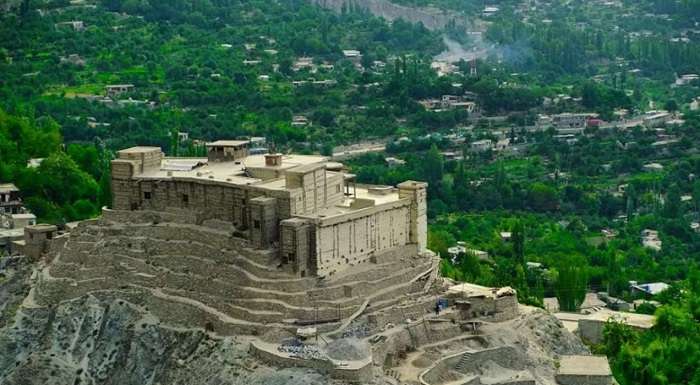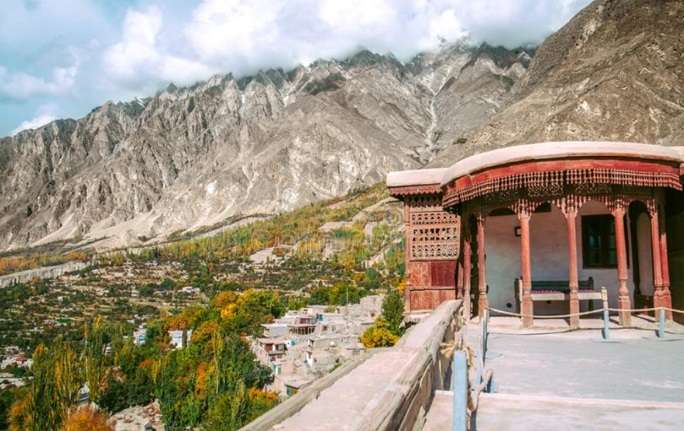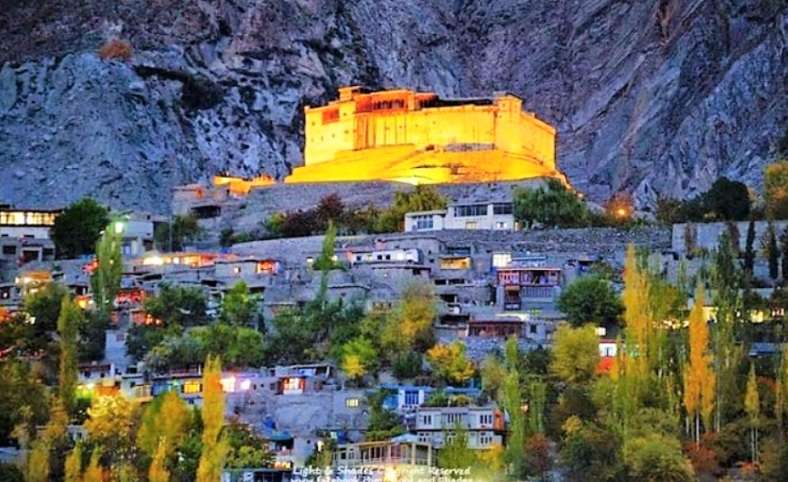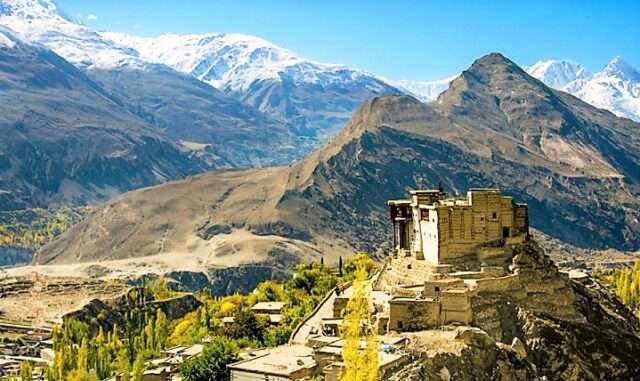Baltit Fort is a crown of Gilgit Baltistan as it stands high on the top of the hill in Karimabad, state capital of Hunza.
In the Gilgit-Baltistan region of northern Pakistan, close to the town of Karimabad, is a fort called Baltit Fort. It was established in the eighth century CE and has been a candidate for UNESCO World Heritage status since 2004.
The historical, entertaining, and beautiful Baltit fort is a must-see location in Hunza if you feel up for a little climb. The Baltit Fort draws thousands of tourists to the province in its new role as a cultural hub and museum, and this has helped to rekindle local pride in its history.
1. History
The 700-year-old Baltit fort and the 1,000-year-old Altit fort in central Hunza are two of the area’s oldest still-standing structures and proof of the valley’s feudal system.
Initially residing in the Altit Fort, the Hunza rulers later moved to the Baltit Fort, establishing it as the capital of Hunza, as a result of a disagreement between Shah Abbas and Ali Khan, the Sultan’s two sons.
The younger brother finally died as a result of the power struggle between the two brothers, and Baltit Fort came to dominate the Hunza state.

Since the very first incident of the installation of Mirs from Gilgit in the ninth century, bilateral relations between Hunza and Nager have remained shattered.
Mir Ghazzan Khan chose to create cannon in Hunza in the first year of his rule in early 1863 after consulting with the Hunza warlords in order to deal with the worrying political circumstances around Hunza.
Hassan Afendi from Kashmir had been summoned by the opposing State of Nager, according to news trickling across the river, to work on building cannon.
Also Read:
Adina Baig, a cannon designer from Badakhshan in Central Asia, was hired by Mir Ghazzan Khan. He first had a material shortage, but in a short period of time and by gathering local resources and services, he found a solution.
As a result, the cannon was successfully manufactured before the rival state of Nager. Hunza State successfully tested its cannon in 1863, and it is now on display at Baltit Fort as a symbol of the state’s significance in the region’s history.
The first person to change the appearance of Altit and afterward Baltit Fort was Ayasho II, Tham. The Ladakh region of undivided India has a close ethnic and cultural bond with Baltistan, the homeland of the Balti people.
The fortified wall and watch towers of the old Baltit settlement and the watch towers of the Fort on its north-western end were destroyed on orders from the British government with the invasion of Hunza and Nager states by the British army in December 1891.

In September 1892, Tham/Mir Sir Muhammad Nazim Khan K.C.I.E. was appointed by the British as the ruler of Hunza State. The Baltit Fort underwent several significant changes during his rule. Using lime wash and coloured glass panel windows, he added a few rooms in the British colonial style to the front elevation after demolishing a few third-floor rooms.
A vital location for governing the trans-Karakoram trade route between South and Central Asia, the rectangular stronghold is situated at the base of the Ulter Glacier and boasts a view of the Hunza Valley and its tributaries.
In 1945, the Mirs of Hunza moved to a new palace down the hill and abandoned the fort. There were worries that the fort might collapse because it began to deteriorate. Till 1945, the Mir lived in the fort. Baltit Fort received recognition for outstanding conservation efforts in 2004 and was proposed for World Heritage status.
According to a press release from UNESCO, “the fort’s rehabilitation has supported the local revival of traditional building skills while a related handicrafts initiative provides increased economic prospects in the area”.
The Aga Khan Trust for Culture repaired this fort for the first time ever (1990–1996) as part of a pilot project for the ongoing preservation of several northern Pakistani monuments.
The Trust is also actively involved in the restoration of historic buildings and monuments in Punjab, including Shahi Hammam and Wazir Khan Mosque, and Khyber Pakhtunkhwa, including Vazir House Swat. Baltit Fort is a crown of Gilgit Baltistan.
2. Structure and Architecture
Baltit Fort’s architecture was influenced by Ladakhi/Tibetan design and shares some similarities with the Potala palace in Lhasa. The Hunza region, which was on the ancient Silk Route, had a lengthy history of kings who added to, renovated, and altered the structure.
The Baltit Fort is made of wood, stone, and mud plaster. On a glacier moraine hill with thin terraces constructed by humans for the integrity of its ancient foundations, it is a three-story structure with granaries and some stores in the basement. It is a historic assortment of swords and weapons, mainly from China and Russia. Baltit Fort is a crown of Gilgit Baltistan.
The second story has sitting rooms, bay windows with balconies, a grand open terrace with a regal throne beneath a lovely oak canopy in the Mogul style, and breathtaking views. The royal room, or Diwan-e-Khas, exhibits a creative side to how the kings and queens lived.

In the past, this room served as a guest house, the Mir of Hunza’s winter residence, and a place for private gatherings. Different items were positioned here to illustrate the social cohesiveness that existed under the rule of the Royal family.
The most notable antiques are Chinese water sets, imported tapestries, mystic carvings, and cooking utensils from the Stone Age. Hunza was known for producing rugs that improve the environment.
Tibetan musical instruments, Chinese banknotes, Kashmiri glass art, regional rugs, vibrant royal seats, and string instruments used during the recitation of devotional poems from Persian literature during religious gatherings in Rani Kott give visitors a glimpse of the cultural ties with nearby cultural areas.
The majority of the stores, the main kitchen, guard rooms, a dungeon, and a winter guest chamber are all located on the first floor of the Fort. Extensive labyrinths connect them to one another.
3. Tourism
With the intention of becoming a self-sustaining Cultural Centre, the Fort is open all year round, seven days a week, and is supported by the sale of admission tickets, mementos, and the kind donations of people and organizations dedicated to the promotion and preservation of this region’s rich cultural and historical heritage.
It is must-see location in the valley of Hunza. The views from the top are amazing, the fort has been properly conserved, and the tour guide is well knowledgeable. Baltit Fort is a crown of Gilgit Baltistan.









